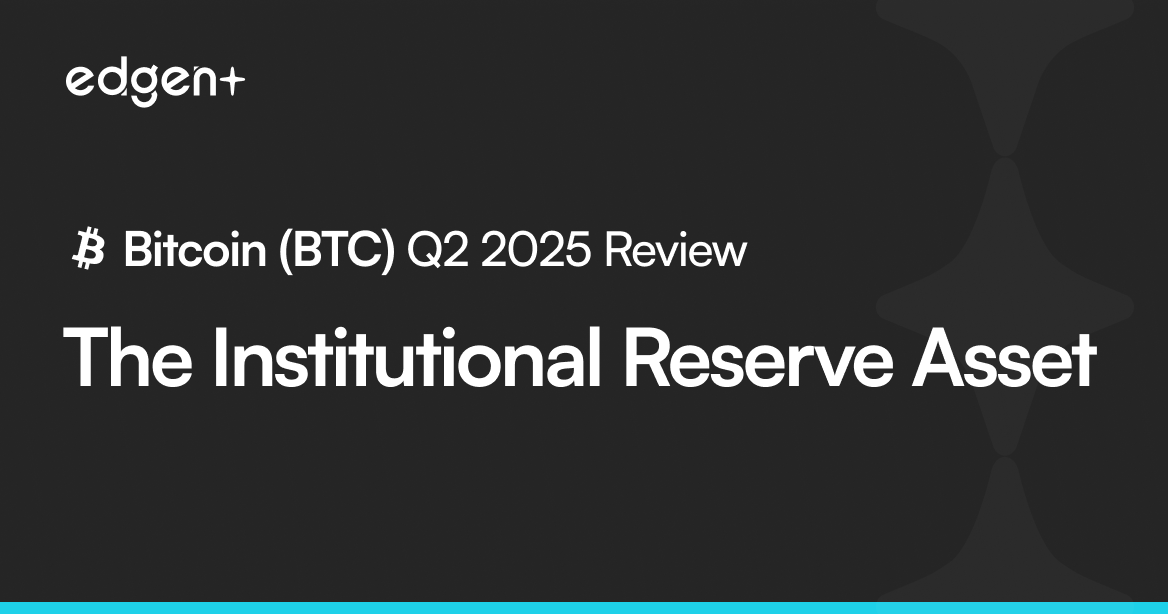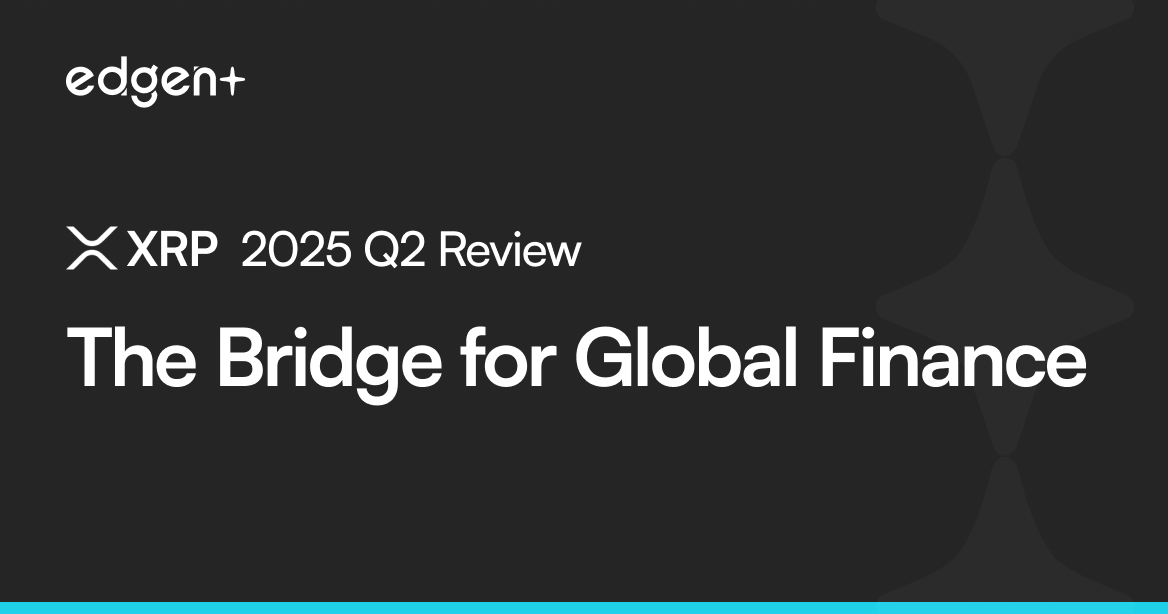
Markets Confusing? Ask Edgen Search.
Instant answers, zero BS, and trading decisions your future self will thank you for.
Try Search Now
Shopify Q2’25 Review: Engineering the Future of Commerce

Shopify provides a leading cloud-based, multi-channel commerce platform for businesses of all sizes, offering tools to start, manage, and grow a retail enterprise.
TL;DR
- Shopify is a dominant force in e-commerce, successfully pivoting its narrative to an AI-powered platform, which serves as a primary growth catalyst and justifies its premium valuation.
- Major growth drivers include the expansion into B2B commerce, strong international performance, and the continued adoption of its integrated AI tools like Shopify Magic and Sidekick.
- The stock's high valuation is its main risk, making it exceptionally sensitive to macroeconomic shifts, interest rates, and any failure to meet high growth expectations.
- Analysts are broadly positive on the company's fundamentals with a "BUY" consensus, but a significant number of "Hold" ratings reflect widespread caution about the current stock price.
Business & Industry Landscape
Shopify provides essential internet infrastructure for commerce, enabling merchants in 175 countries to manage their business across web, mobile, social media, and physical locations. The company operates in an industry being reshaped by powerful structural trends, most notably the integration of Artificial Intelligence. AI-driven commerce, which includes personalized recommendations and automated store creation, is creating a significant competitive advantage for platforms that can effectively leverage it to boost merchant sales and efficiency.
Competitive Positioning
Shopify holds a strong market position but faces a diverse set of competitors across different segments. Its comprehensive, user-friendly ecosystem provides a strong defense, but the landscape remains highly contested.
Competitor | Segment | Key Differentiator |
Adobe Commerce (Magento) | Enterprise | Offers deep customization for large businesses but requires more technical resources. |
Salesforce Commerce Cloud | Enterprise | Provides a complex, feature-rich platform for large-scale retail operations. |
WooCommerce | Open-Source | A WordPress plugin offering maximum flexibility with no platform fees, but users must manage hosting and security. |
Amazon | Marketplace & Services | A major competitive threat through its vast marketplace and growing suite of merchant services. |
Shopify's strategic focus on a unified platform that integrates online, offline, B2B, and AI-powered tools allows it to compete effectively across these varied segments.
Growth Catalysts & Projections
Shopify's growth trajectory is supported by several key qualitative factors, with a primary focus on technological innovation and market expansion. The company is positioned to capitalize on structural shifts in commerce rather than temporary cycles.
- AI-Powered Tools: The most significant catalyst is the adoption of its AI product suite, including "Shopify Magic" and the AI assistant "Sidekick". A successful rollout of its "agentic commerce" vision, where AI agents transact for users, could validate its premium valuation and drive further growth.
- B2B Commerce Expansion: The Shopify B2B segment is growing at a triple-digit rate, significantly expanding the company's total addressable market beyond its traditional SMB focus.
- International Expansion: Growth in key international markets, particularly Europe, is outpacing other regions, providing a long runway for continued merchant acquisition.
Analysts view the successful execution of the AI roadmap as the "biggest potential driver of profitability," a narrative the market has embraced but which still holds upside if transformative products are launched.
Financial & Valuation Health
Shopify's financial profile is a tale of two cities: exceptional operational strength paired with a demanding valuation. The company earns a perfect 10/10 score for Financial Health, reflecting a strong balance sheet and robust cash flow. However, its Valuation receives a C- grade, with a score of just 2 out of 10. This indicates that the stock's current price has already factored in a significant amount of future success, creating a "priced-for-perfection" dynamic where any misstep could lead to a sharp correction.
Market Momentum & Ownership
Momentum for Shopify stock is strong, though tempered by some cautionary signals. The current price of $143.48 is trading above its 50-day ($139.4) and 200-day ($114.4) moving averages, a bullish technical signal. However, recent indicators show some cooling; the Relative Strength Index (RSI) has fallen from overbought territory to a neutral 48.28, and the MACD histogram has recently turned negative, suggesting a potential pause in momentum.
Institutional Ownership
Confidence from large investors is high, with institutions owning nearly 75% of the company. Top holders include American Funds Growth Fund of America and the Invesco QQQ Trust.
Insider Transactions
A notable point of caution comes from persistent selling by top executives, which contrasts with the otherwise bullish institutional sentiment.
Analyst Consensus & Price Targets
Wall Street sentiment is predominantly bullish on Shopify's fundamental business, though analysts are divided on whether the current stock price offers a good entry point.
- Consensus Rating: The consensus among 48 analysts is a "BUY".
- Recommendation Trend: The latest trend shows 11 "Strong Buy," 27 "Buy," 16 "Hold," and 2 "Strong Sell" ratings.
- Price Target: The average 12-month price target is $160.93, with a high estimate of $204.75 and a low of $101.00.
This split highlights the central debate around Shopify: the company's execution is widely praised, but its valuation remains a key point of contention.
Valuation Scenarios & Risk
The forward-looking outlook for Shopify is highly dependent on the interplay between its own execution and the broader macroeconomic environment. Its premium valuation makes it more sensitive than most to shifts in investor risk appetite.
Scenario | Share Price Target | Narrative | Probability |
Bull Case | $190 - $220 | Flawless AI execution and B2B growth in a favorable, "risk-on" macro environment. | 35% |
Bear Case | $100 - $120 | Solid company execution is overshadowed by a "risk-off" macro environment (e.g., higher rates), causing valuation multiples to contract. | 40% |
Disaster Case | < $95 | A sharp recession hits merchant sales, AI fails to deliver, and a hostile macro environment causes a severe de-rating of the stock. | 10% |
Risk Management: Key risks to monitor include a downturn in consumer spending, increased competition from giants like Amazon, an unfavorable outcome in the Sezzle antitrust lawsuit, and any delays or disappointments in the AI product roadmap.
Investment Thesis & Key Signposts
Investment Thesis Summary
Shopify is a high-quality growth leader transforming into a dominant AI-commerce platform. Its long-term potential is immense, but its premium valuation creates significant near-term risk. The investment thesis hinges on the company's ability to execute its ambitious AI and B2B growth plans flawlessly to justify its high price, making it highly sensitive to both internal execution and external macroeconomic conditions.
Key Signposts to Monitor
- AI Product Adoption: Monitor announcements from "Shopify Editions" product showcases for new AI tools. Successful launches that demonstrably increase merchant sales would validate the core bull thesis.
- Macroeconomic Environment: Track key indicators like consumer spending and interest rate policy. A stable or declining rate environment is critical to supporting Shopify's valuation multiple.
- Competitive Developments: Watch for strategic moves from Adobe, Salesforce, and Amazon in the e-commerce space. Any signs of market share erosion would be a significant red flag.
- Legal Rulings: The outcome of the Sezzle antitrust lawsuit represents an underappreciated risk that could negatively impact the profitable Merchant Solutions segment.










